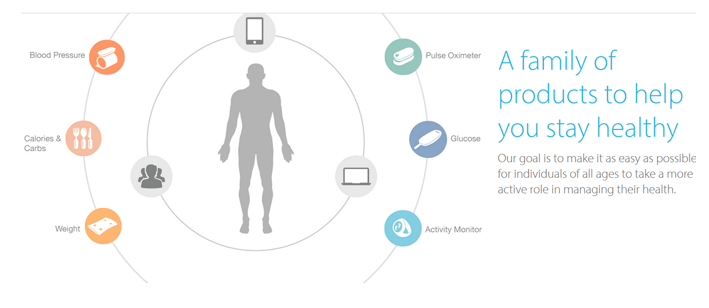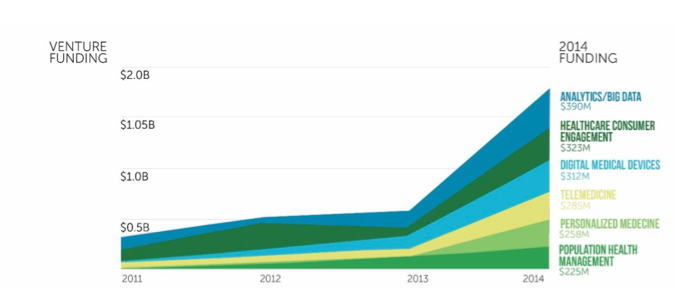Tech is becoming a part of all aspects of life and sustainability is no exception to this. In this piece, in the run-up to our Beyond Business As Usual Forum, we present the future of healthcare and how there is a growing opportunity for tech to be leveraged to provide for a growing, more expectant urban population.
While China has made great strides to improve the quality of life for its 1.5 billion residents, it’s healthcare system has seen increased pressure to meet the size, scale and speed required for the urbanized population. Changing lifestyles, that include changes in diet and reductions in daily activity, are a by-product of affluence and have led to dramatic changes in the type and frequencies of diseases affecting the local population.
At the same time, the growing elderly population has and will continue to place great pressure on the public and private healthcare system, a system that has struggled to keep up with the pace of need. To cope with size, scale, and speed of changes, the government has been aggressively investing into the sector, building hospitals, buying equipment, and training doctors, while at the same time working to provide alternative solutions. Solutions that will not only keep up with the scalability of need but also meet the ever-increasing expectations for quality of service by patients while balancing concerns of economic affordability.
To overcome the challenges faced, the government predictably made investments in hospitals, equipment purchases, and medical professional training, however through this post, we would like to open up a conversation about the role of technology as a medium through which improves in accessibility, affordability, and quality of healthcare will occur.
Appointment-Booking Apps
Appointment-booking apps are gaining popularity amongst young Chinese patients; users can instantaneously book appointments with a specific physician. Guahao is the leader in mobile health in China, it is a mobile app that connects patients with doctors. It allows the users to search for doctors in their geographic location and book appointments. By putting the patient directly in contact with the doctor it increases medical provision efficiency and is a sustainable means of improving healthcare quality in China.
In response to the long-standing problem of vast queues and growing inefficiencies in Chinese hospitals, telecom and data companies are offering solutions to sustainably cut the time spent at the hospital and digitalize certain activities. For instance, in 2014, Alipay announced a “Future Hospital” plan, aiming to facilitate workflow efficiency in the current system. Through the platform, users are not only able to register for consultations and monitor queues but, most importantly, they can directly conduct online payments to specific hospitals.
Personalised Medicine
To provide answers to the lack of trust between patients and doctors, medical tech companies offer a more personalized approach to healthcare, where consumers can “shop for doctors.” Mobile apps like Chunyu Yisheng allow patients to search for doctors, review their qualifications, and contact them instantaneously.
This platform empowers consumers by providing them with transparent information and aims for users to become more autonomous and manage their own health and medical data. Thus, users’ medical decision-making is algorithm-based rather than feelings or assumption-based; users make more efficient decisions when it comes to medical services.

Nonetheless, for personalized medicine to work effectively and alleviate the pressure put on hospitals, trust needs be built with the consumer through recognized accreditation and rating systems. Also, it needs to be integrated within commercial insurance plans and government reimbursement packages in order to incentivize both doctors and consumers into using personal medicine mobile apps.
Wearable Medical Devices
With improvements that data can bring to knowledge and decision making, the movement of wearables from luxury items for sports enthusiasts to a part of the daily lives of many is occurring. Seen by many to be a crucial area for healthcare; users will soon be able to measure a wide range of metrics including heart rate, sleep patterns, blood pressure, blood oxygen, and blood sugar. Through this data, the ability to improve the quality care at the personal level will be able to take place.
In 2014, Chinese smartphone giant Xiaomi introduced smart bracelets that can monitor several health features such as sleeping patterns and heart rate. In fact, as measured by a report from GSMA there is a potential for growth in the wearable medical device market of up to 5 billion RMB ($790 million) by 2017.
Most importantly, 20% of the revenue for wearables is expected to come from chronic diseases monitoring solutions. Something this iiMedia report highlights.
Medical Research
The gained popularity of wearable devices has changed the way medical research is conducted. Wearables are connected to a smartphone app in which users input their medical data that is collected by medical labs; activity monitors, drug monitors, and smart clothes cut time spent on gathering data and jump directly to analysis.
An entrant into this space is Apple, who able to get 10,000 people to sign up for Stanford University’s medical study through Apple’s ResearchKit app. A number that hit 100,000 within a year, and helps researchers find the scale for their research asthma, Parkinson disease, diabetes, and breast cancer.
23andMe is another example of a technology startup that has the potential to change the depth of research in the healthcare field, through their genetic testing product. 10 years ago it required 1000 scientist to spent 100 million dollars before they were able, but for 100USD 23andMe consumers are able to run the same test on their own genetics, gain insights into their ancestry, and (soon) may be able to gain insights into potential health threats. Health threats that will be identifies=d as part of an algorithmic analysis of data that consumers themselves are providing to 23andMe.
Conclusion
With China’s healthcare sector facing increased pressure from the clinical, demographic and socio-economic changes, the sector will not only need to undergo structural changes and reforms, it is going to need to find ways to efficiently scale solutions to the size of the need.

For us, it is a challenge that will provide a massive opportunity for technology providers to sell their products and services to healthcare providers and consumers. Something that investors, as can be seen in the chart above, also see and will continue to as the size, scale, and speed of the healthcare market grows going forward to 2050.
This article was written by Rim Karoui, Research Analyst at Collective Responsibility.
